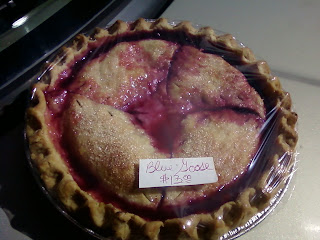 |
| Canele de Bordeaux |
This is a story of beauty and the beeswax. There is a happy ending.
It's all about the Canele de Bordeaux, a little cake originating from the French city of that name. Caneles are available throughout France but in Dallas, we know of only one bakery offering them, the boulangerie Village Baking Co.
The canele is rare and fabulous (like creme brulee once was), a combination of caramelized exterior with a soft, almost custardy interior. There's a bit of something more on the outside that you can't quite name.
Many stories involving nuns, thefts of flour along the waterfront and other mysteries surround the canele, and Paula Wolfert has those tales to tell. Let's just say whenever French patissiers form a confrérie (brotherhood) to protect a product, it's important news. The confrérie establishes standards to protect the tradition, in this case, for the canele.
Even before the first bite, you notice the shape - it's small, circular like a Doric column and fluted. It has a little indentation on top, which offers room for a good apricot jam, a dollop of pastry cream or a single cherry.
To make it, you need a canele mold.
These can range from the pricey $8 mold to the eye-popping $25 copper version from Amazon. (Silicone molds are out there, with varying degrees of performance vs. the metal molds.)
Next, you need a method that has worked out all the issues of timing and temperature. The canele method from Chez Pim performs deliciously well. Pictures and directions carefully walk you through the key steps.
That crunchy but elusive exterior ingredient comes from beeswax. In a 1-1 ratio, a bit of edible beeswax gets melted with butter and coats the mold's interior. Chez Pim shows you what happens if you don't use it. This baker found beeswax essential for the taste and texture, giving a hint of honey essence. Find beeswax wherever honey is sold at farmers' markets.
Tip from the beekeeper: Freeze your beeswax. When ready to use, place in a plastic bag and hit it with a hammer; it will splinter for easy melting, better than trying to cut it up.
We had a silicone mold and one Canele Bordelais Mold ("Bordelais" meaning "of Bordeaux"), so we tried the batter in each type. Result? We rushed out to buy the rest of the Sur La Table metal molds. The silicone mold was floppy, so it didn't sit straight on the rack when in the oven. The fluted edges weren't clean and sharp, the uneven distribution of heat left the interior sagging once out of the mold (leaning tower of pisa) and worst of all, some of the batter spilled onto the surface of the silicone and quickly burned there. We have not been able to clean off the residue. We'll stick to metal.
Notes: At a small dinner, we served the caneles with a dollop of pastry cream and handed out some caramel sauce. The hostess brought out gelato and voila, magic. The leftovers were frozen and are holding up well, at least for a week. For the batter, we chose Grand Marnier over rum. Otherwise, we followed the Chez Pim method and will do it again and again. Plan ahead if making for an event. The batter must rest about 48 hours in the fridge.
Canele de Bordeaux makes the treat tray for the dinner with the boss (see previous posts), because it soars on all levels. It's portable. It fits in the hand. It's lovely to look at and beautiful when tasted, not overly cloyingly sweet like that other character, The Cronut.
It's rare and it's fabulous.
After all, it has its own brotherhood keeping watch.






